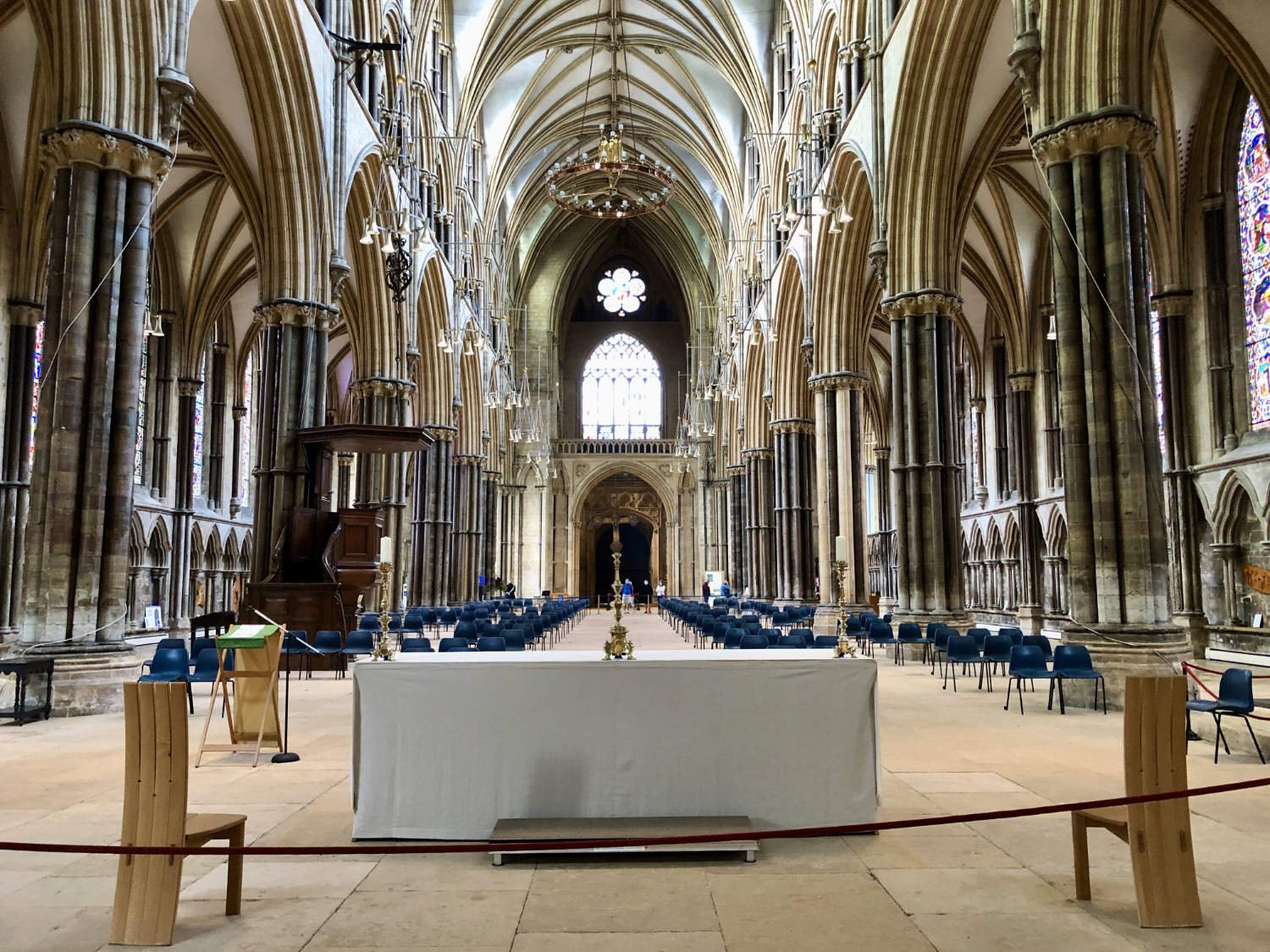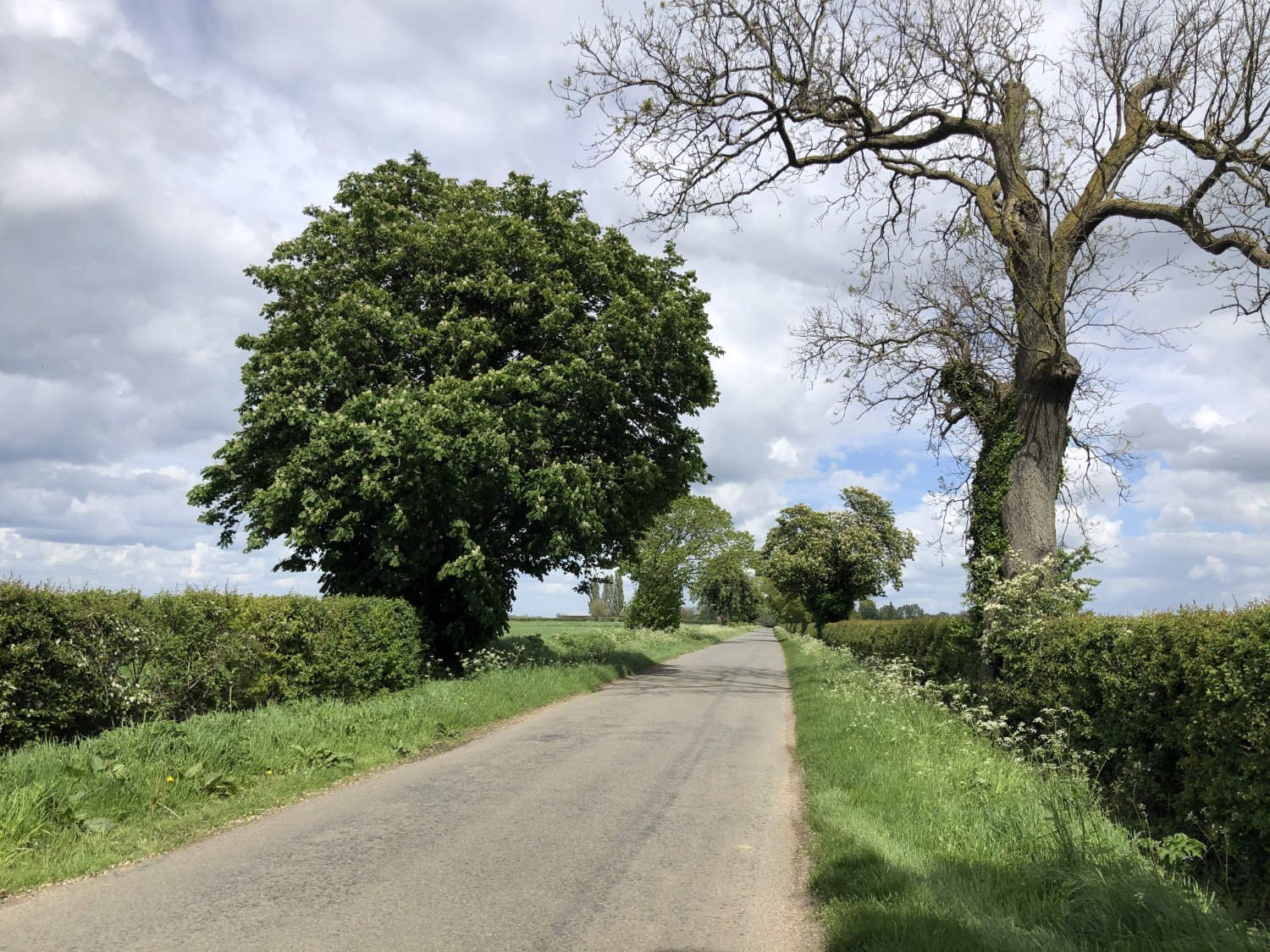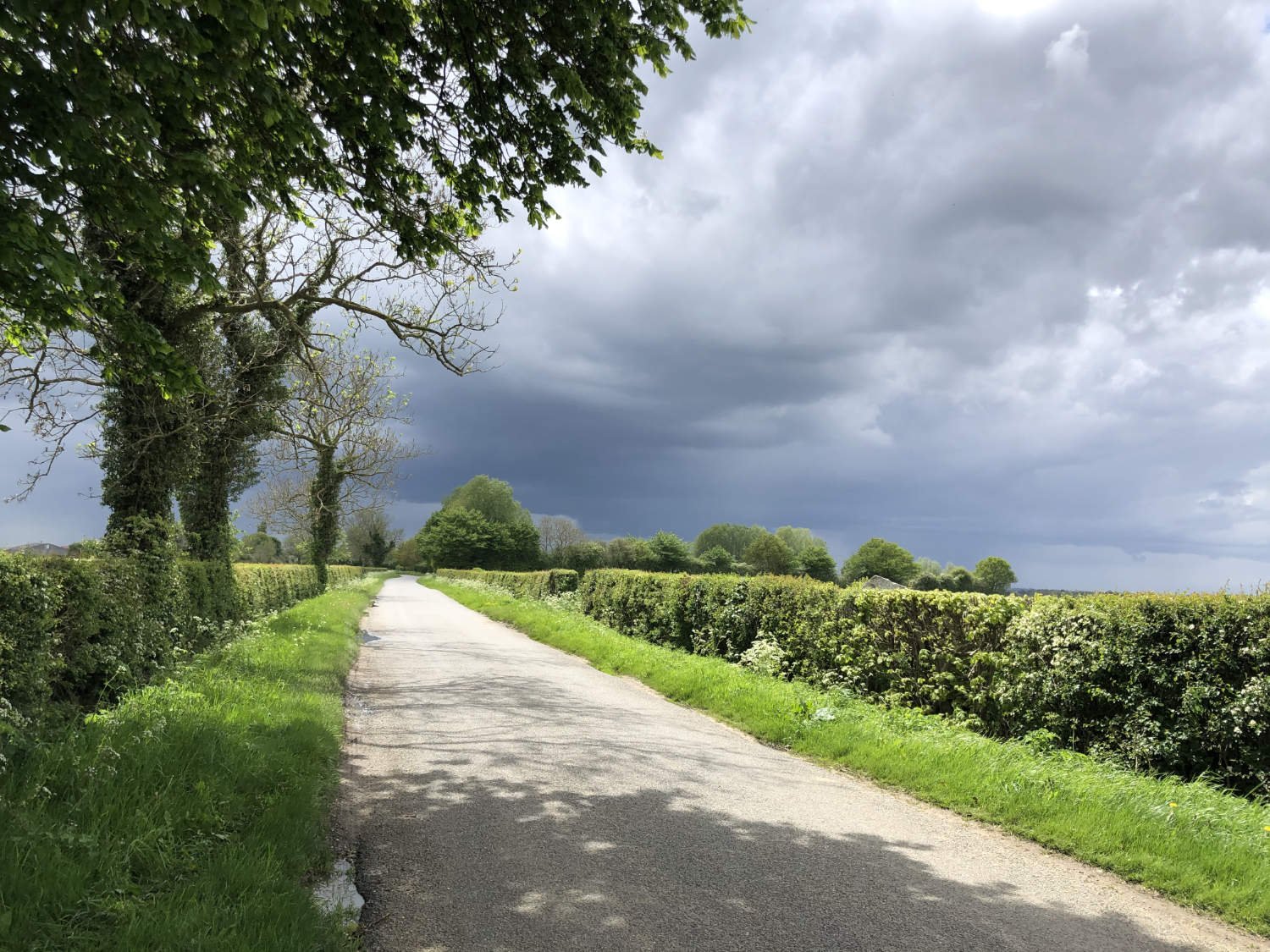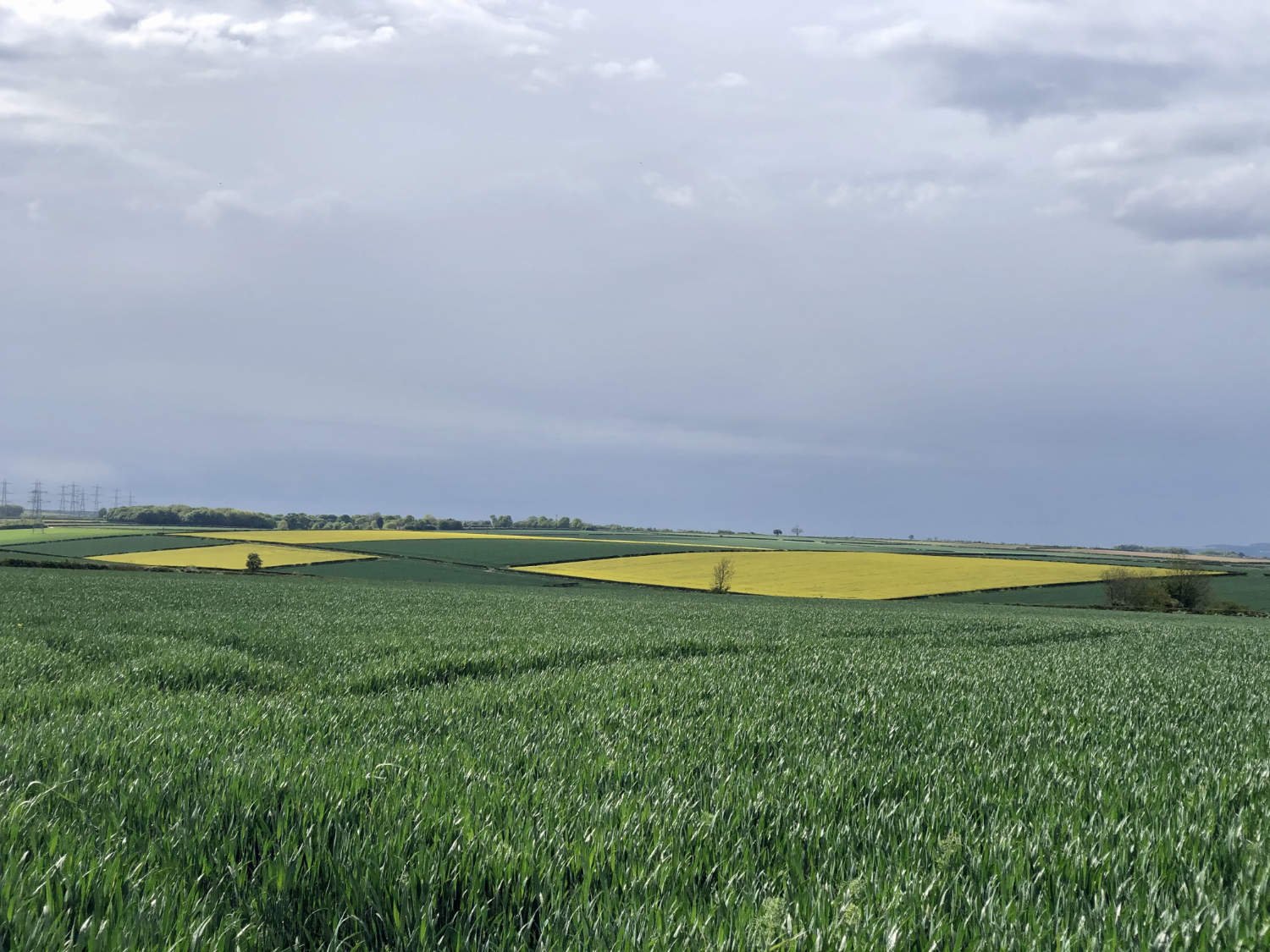NCN 1 Stage 8 Lincoln to Hull
Storm over the Lincolnshire Wolds
Lincoln to Hull
NCN 1 Stage 8
In 1949 it was decided that unspoilt areas of countryside should be protected for future generations. Since then, 34 areas of Outstanding Natural Beauty (AONBs) have been created, including the Lincolnshire Wolds which was added to the list in 1973. So it will be of no surprise then, that this stage through the Lincolnshire Wolds is a wonderful rolling ride through woods and over hills, through hidden valleys and beside gentle streams. Perhaps the greatest pleasure is riding the narrow country lanes which have the widest flower-filled verges of any county in the UK. In the heart of all this is one of England’s few on-shore oil fields, although you’ll have to look very hard over hedges if you are to detect even the smallest sign of it. The day finishes with an airy ride over one of Britain’s best bridges, across the Humber.







Ride Practicalities
The route is generally well signed throughout as NCN 1.
Some of the bridlepath sections are missing signs (2021), so be sure to download the route.
START/FINISH: Lincoln/Hull DISTANCE: 96km TOTAL ASCENT: 656m TERRAIN AND SURFACES: Quiet country lanes with barely any traffic. Some of the bridleways are lumpy, so a ‘gravel’ bike will come into its own. That said, I ride a touring bike with 28mm tyres, and have had no issues riding along the tracks over the Wolds. RECOMMENDED CAFÈS/PUBS/ACCOMMODATION: Places remain for you to discover based on budget, mood and need NEARBY MAINLINE TRAIN SERVICES: Lincoln, Hull PLACES TO VISIT; Lincoln Cathedral, Lincoln Castle, Hull LINKS TO OTHER RIDES: NCN1 Stage 7 and Stage 9, NCN 12
Ride Notes
There are forty-two cathedrals in Britain. Every city has one. But few are as stupendous as Lincoln. It has stood for over one thousand years, and until it fell down in 1534, its tower made it the tallest building in the world, supplanting that of the Great Pyramid of Giza which had held the record for the previous millennium. To say that the cathedral is impressive is not the half of it - it is huge, beyond imagination big. And to think that it was created by masons who used a trained eye rather than computer modelling, somehow makes it all the more wondrous. If you were unable to walk through it’s doors after yesterday’s long stage, then this morning you should be at the West door at opening time so that you may sit awhile enveloped by the power of stone.
Lincoln Cathedral
The ride out of the city is pretty straightforward on quiet roads and well signed. There’s a short spell on a shared pavement beside the A46, but there is rarely anyone to share it with and soon you are away from traffic and pedalling through a gentle countryside. What is so striking is how wide the verges of the country roads are; it would be possible to fit three asphalted lanes between the hedges. They are flower-filled, buzzing with insects. Butterflies flit and birds gorge on the abundance of food. Britain, one of the most nature depleted countries in the world, has lost over 97% of its wildflower-rich grassland since the 1930s due to intensive agriculture and poor management. This is being countered by the ‘wildlife corridors’ along roads, railways and canals. It you were to put the total hectarage of all the verges together, you’d arrive at roughly three million hectares, an area equivalent to the size of Devon, Norfolk, North Yorkshire, Cumbria and Kent combined. The countryside charity Plantlife, estimate that without them, a further 40-70% of species living in Britain could face extinction. To buzz along the empty roads enjoying the colour and hearing the energy flying around you, pricks you with an intense pleasure.
The narrow road and wide-verged lanes of Lincolnshir
Oil plays a larger part in today’s ride than you might have anticipated. If, as you ride through the parish of Stainton by Langworth, you peer over the hedges you may see a ‘nodding donkey’. Although the presence of on-shore oil fields in Britain has been known since 1851, it was only in the 1990s that production peaked to around five million tons per year, which equates to about 2% of what is produced offshore in the North Sea. The current Conservative Government have issued new licences to companies such as The East Midlands Province, so that the remaining estimated 15 million tonnes of oil left might be extracted rather than be left in the ground.
The Humber refinery
Your next oil encounter will be as you approach the Humber, where over the last of the remaining hills, the chimneys of The Humber Refinery, one of the largest in the UK, appear like some very erratic data shown on a graph. The refinery processes over 130,000 barrels a day, 70% of which is petroleum for the home market. To offset this dependance that we Britons have for oil, the Refinery The Humber refinery has given over half a million pounds to local schools to encourage engineering and business skills. And according to the website, they sponsor Christmas parties for local Senior Citizens and children. The beneficence of oil!
Oil Seed Rape
The third encounter with oil is of the vegetative variety - oil seed rape. In spring, the fields of the Wolds are chequered with the hi-viz flowers of rape and the veridian green of the winter wheat. It looks like some giant’s green and yellow checkered blanket has been thrown over a partially made bed. According to Countryside, there are over 400,000 hectares of the crop in the UK. Certainly, the oil is very good for you.
Lincolnshire woods
Other than oil in its various forms, and wide nature-rich verges, you’ll bob up and down over the rolling hills like a boat on a swell. You ride through woods, sometimes on ancient drove tracks and on bridleways. The ride from Lincoln is a rural one, and village shops have long since ceased to exist, so Market Rasen is the only significant refreshment stop until you arrive in Hull. It’s a pleasant market town with a few cafes, famous for its race course, and ruined by the lorries which thunder through it on the A631.
After the town, you ride on Thoresway, a very old track through woods and over the rolling Wolds that probably was used long before the Vikings arrived. To date, the route has been reasonably well signed; it is nearly possible to ride to the Lincolnshire Wolds from Dover without a map or bleeping device on your handlebars. However that number ‘1’ tucked into the little red square is absent at several important places, usually in woods or on the bumpy bridleway juuntions. if you are able, download the OS App; all the NCN routes are marked on it and it really comes into its own today. Even better in that it is free and easy to download is the route map accessed above in Ride Practicalities.
The Humber Bridge
The day began with a cathedral that was for a time the tallest building in the world. It ends crossing a bridge that was for the latter part of the twentieth century, the world’s longest suspension bridge. The Humber Estuary with its liquid mud and strong tidal flows has always been a challenge to cross. Until 17 July 1981 there were two choices; a 60 mile journey up-river to the first crossing point, or the ferry. The twin towers are 155.5m tall and in order to allow for the curvature of the earth, they are 36mm further apart at their top than at the bottom.
Riding across any wide river is special, but crossing the Humber on this journey is an extra special moment; you really feel that you are crossing a border, entering into another land. The architecture changes almost as soon as you are over the bridge, the accents and dialects change, there’s a cultural shift too with a greater sense of identity displayed in towns, in shops and cafes; ‘Yorkshire and proud of it.’ Until you cross the next major river border the Tyne, it’s only possible to drink Yorkshire Tea, drink brewed in Yorkshire Ale, eat Yorkshire Biscuits, and forget your ‘full ‘English’ breakfast, for once across the Humber, you tuck into a ‘Full Yorkshire’.
Custom’s House, Hull
Riding a bike so far above the surface of the waters (30m at high water) is quite a thing, but once back on firm ground in Hessle, you are brought back to English earth; the ride into Hull is dreary; a succession of dull housing lining a busy road, although thankfully, there are good bike lanes and shared paths to ride on. Kingston-upon-Hull, (as Hull is officially known) despite being the UK City of Culture in 2017, is often referred to in derogatory terms as having an end of the line feel to it, which seems harsh for one of the nation’s leading ports, as well as being the home of historically influential people; Amy Johnson, the early flight pioneer, Philip Larkin and William Wilberforce. The Old Town, surrounded on three sides by water, is full of venerable buildings from old warehouses to merchant halls, built in the solid, thick-walled style. Hull is a singular place, a free-spirt sort of place, where even the telephone boxes are painted white.
Every route on this website has been carefully researched as well as ridden. However situations on the ground can change quickly. If you know of changes to this route, or cafes, pubs and the like which you think other cyclists need to know about, feel free to share your thoughts below.
If you enjoyed this guide, why not subscribe to the website so as not to miss other inspirational routes?
wheremywheelsgo.uk is a Feedspot UK Cycling top website







